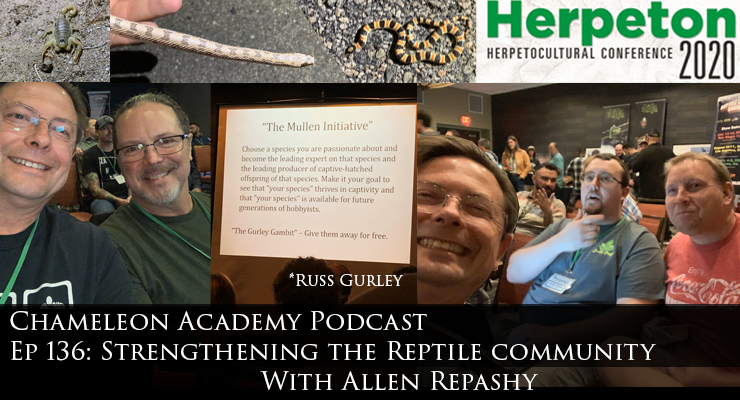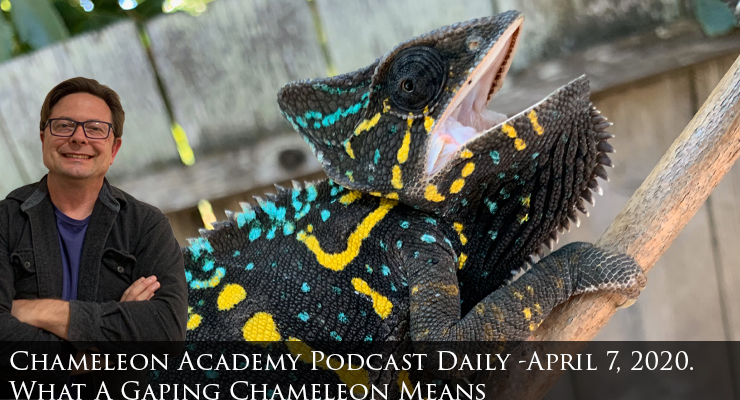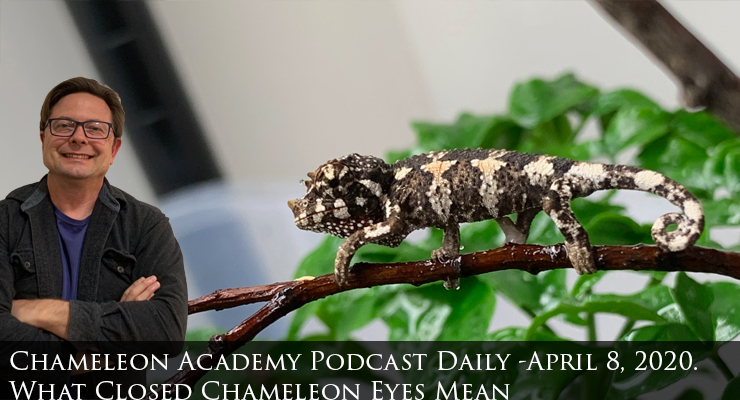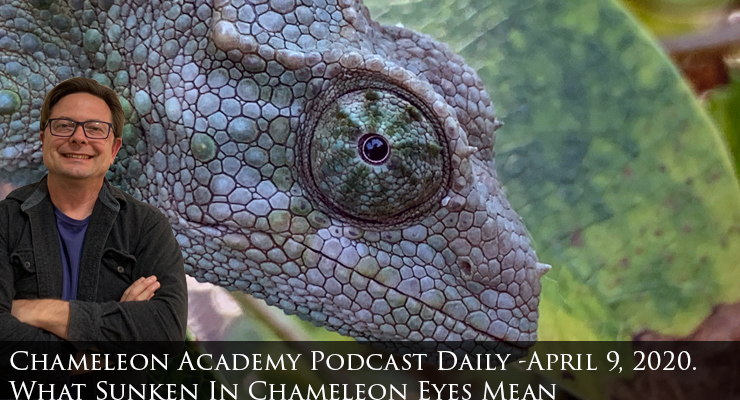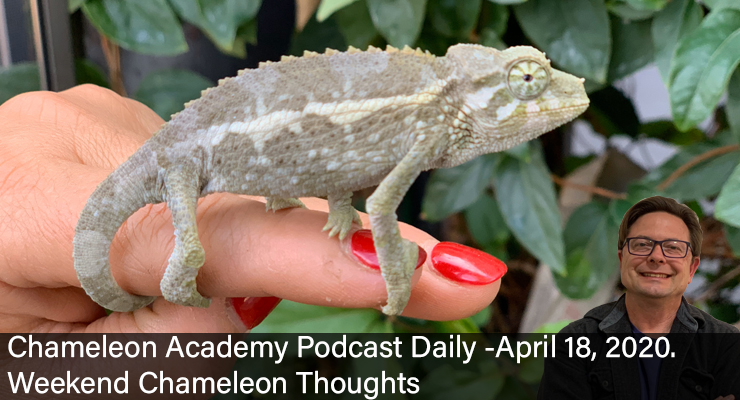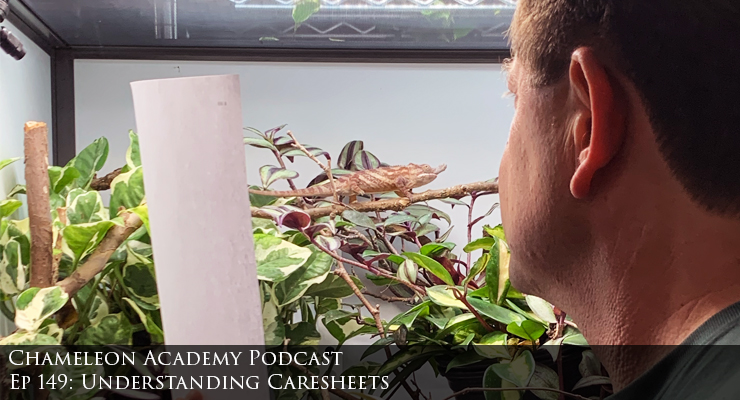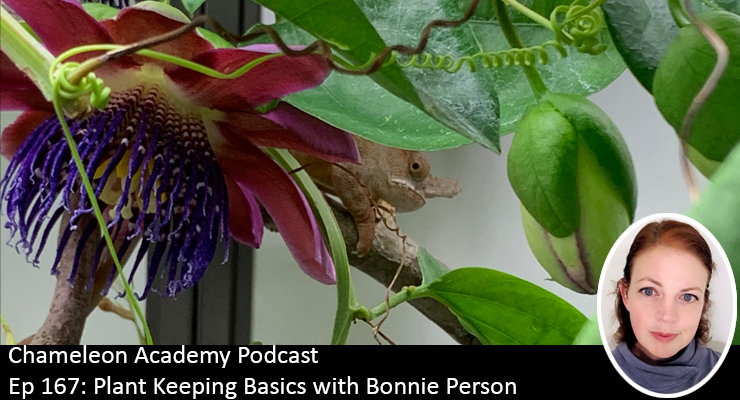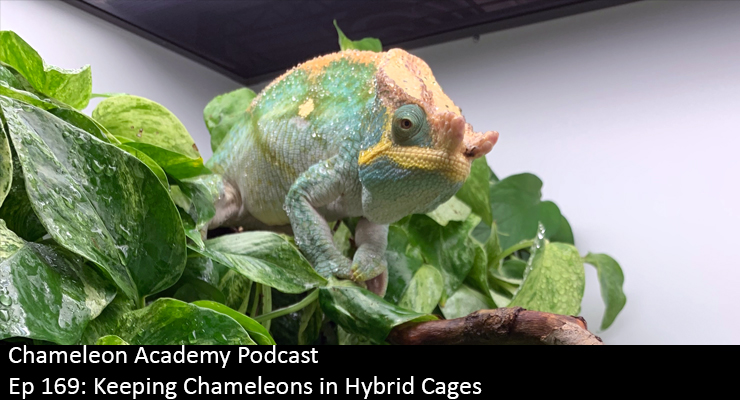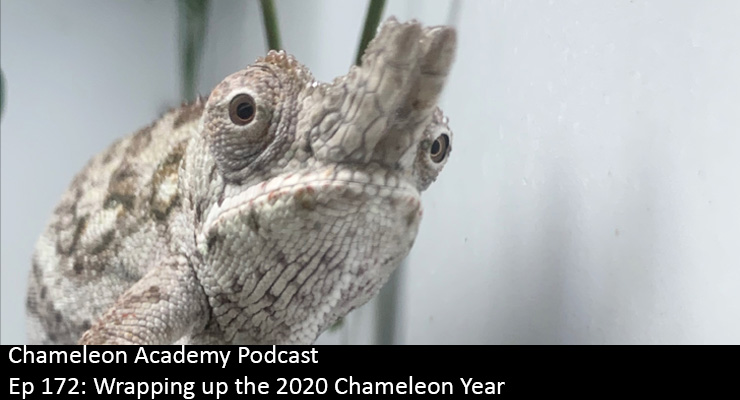We in the chameleon community are working to uncover the needs of chameleons with respect to UVB. We are exploring the minimum levels necessary and the psychological effects of higher levels. Today I talk about the thought process in working out these UVB mysteries.
Click image for show notes – activate the audio player to hear the episode


Bill Strand
March 23: Figuring out UVB for Chameleons
April 1, 2020, Screen Walking Chameleons



Bill Strand
Screen Walking Chameleons
Today we talk about the annoying habit chameleons tend to have of walking their screen cage sides. There are many reasons why this could be happening! Listen in and see if any of these options match your condition.
A great reference for understanding this behavior is in the Chameleon Academy behavior section!
April 2, 2020, Advice to Enthusiastic Beginners



Bill Strand
Advice to enthusiastic beginners
I am not sure how to title today’s episode! I started off by intending to answer a question about anything I regret over the last four decades and ended up offering advice on how to grow in your chameleon journey! So, we will just have to go with it!
Ep 139: Three New Calumma Species with Mark Scherz


Bill Strand
Three New Calumma Species with Dr. Mark Scherz
Dr. Mark Scherz comes on and talks with us about his work in defining the species of Madagascar. This is the second of two parts. In which we dive into the details of the new species within the Calumma nasutum group.
April 4, 2020, Crossbreeding - should we?



Bill Strand
Crossbreeding - should we?
There are a number of issues to consider when answering the question about crossbreeding in the chameleon world. There are many strong opinions out there. I give my opinion, but also present the consideration so you can make your own decision.
April 5, 2020, Spring and outdoors basking
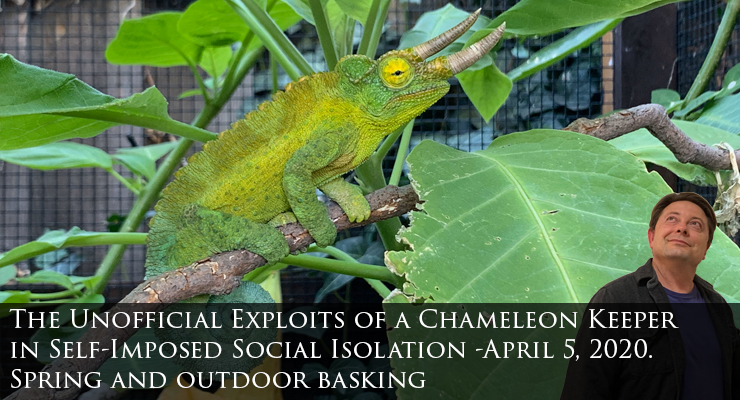


Bill Strand
Spring and outdoor chameleon basking
The seasons are warming up for those of us in the Northern hemisphere and it is time to think about getting your chameleon some natural sunlight. I share some experience and advice to have that happen safely.
April 6, 2020, Female Veiled Chameleon Feeding


Bill Strand
Female Veiled Chameleon Feeding
We are making progress in our drive to determine the feeding schedule and husbandry to maintain healthy female veiled chameleons through their lives – especially including egg laying. By controlling their diet and conditions we can reign in their body’s enthusiasm for making eggs. By providing greater than ideal conditions their body creates more eggs than are healthy. As this is a more serious topic it has been given its own post. Please continue the conversation at this post:
April 7, 2020: What Chameleon Gaping Means


Bill Strand
What is means when a chameleon gapes
When we are trying to figure out what is happening with a chameleon remotely (over social media) we need to ask important questions. Today I go over what to ask if some one has a chameleon that is gaping. It can mean many things and it is our job to come to the correct conclusion!
April 8, 2020: What Closed Chameleon Eyes Mean


Bill Strand
What Closed Chameleon Eyes Mean
The chameleon’s eyes are one of the most significant gauges of chameleon health – both physical and emotional. Today I discuss what closed eyes can mean.
April 9, 2020: What Sunken-in Chameleon Eyes Mean
Bill Strand
What Do Sunken-in Chameleon Eyes Mean?
Chameleon eyes are a great resource for us gauging the health status of our chameleons. Sunken eyes are a huge red flag and the chameleon needs immediate attention. But what kind of attention is needed? Yes, we need to figure out what it means! And today I discuss possibilities.
Ep 140: Vitamin and Mineral Imbalance with Dr. Rob Coke


Bill Strand
Vitamin Imbalance in Chameleons with Dr. Rob Coke
Today Dr. Rob Coke, Head of Veterinary Care at the San Antonio Zoo, comes on and helps expose us to vitamins A and D3 and the signs of overdose and deficiency.
April 11, 2020: The Top Five Chameleon Husbandry Transitions
Bill Strand
Top five Chameleon Husbandry Transitions
Through the Chameleon Academy I am pushing our chameleon husbandry forward and with that comes a number of transitions. Today I discuss the top five husbandry transitions we are in the middle of right now.
April 12, 2020: Veiled Chameleon Care Summary
Bill Strand
Veiled Chameleon Care Summary
Today I do an audio review of the Veiled Chameleon Care Summary from this Chameleon Academy website in under 15 minutes!
This is an audio review for the Veiled Chameleon Care Summary that can be found here
April 13, 2020: Panther Chameleon Care Summary


Bill Strand
Panther Chameleon Care Summary
Today I do an audio review of the Panther Chameleon Care Summary from this Chameleon Academy website in under 15 minutes!
The actual page and care summary can be found here
April 14, 2020: Jackson's Chameleon Care Summary


Bill Strand
Jackson's Chameleon Care Summary
Today I do an audio review of the Jackson’s Chameleon Care Summary from this Chameleon Academy website in under 15 minutes!
The actual page and care summary can be found here
Chameleon breeder Frank Payne joins me and shares his initial results from diapause experiments he is running on chameleon eggs. Diapause is the cooling period during incubation and Frank shares what could become a valuable tool for breeders to control the hatching time.
Click image for show notes – activate the audio player to hear the episode


Bill Strand
April 15: Chameleon Egg Diapause Experiments with Frank Payne
There is enormous insight that is quietly moving about in our experienced community – often outside the digital spotlight. And if you can find an old time chameleon mentor it is well worth striking a friendship. Today I share a story about my chameleon world mentor that formed so much of what I am today.
Click image for show notes – activate the audio player to hear the episode


Bill Strand
April 16: Chameleon Old Timers & Mentors
Silkworms are a nutritious and highly prized chameleon feeder. Today, Susan Marquardt of BeastMode Silkworms shares with us a little about the silkworm and how we can breed them ourselves!
Click image for show notes – activate the audio player to hear the episode


Bill Strand
ep 141: Silkworms with Susan Marquardt
Today I take a casual look at what a chameleon keeper’s weekend looks like and I share random thoughts from my Saturday.
Click image for show notes – activate the audio player to hear the episode


Bill Strand
April 18: Weekend Chameleon Thoughts
Books are special, and today I review the books that, even with all the information on the internet, I still reference on a regular basis. These titles make a great addition to your personal chameleon library.
Click image for show notes – activate the audio player to hear the episode


Bill Strand
April 19: Books for your Chameleon Library
Today I talk about upending the natural order by bringing outdoor vines into my chameleon cage and I discuss using psychological tricks to get better mating response in chameleons.
Click image for show notes – activate the audio player to hear the episode


Bill Strand
April 20: Mandevilla & Chameleon Psychology
Today I touch on a couple topics. I talk about the difficulty in beginners getting the right information, I revisit the Plants Alive! challenge, and I encourage us to see our cage as a sanctuary. I also announce that this will be the last daily episode of a chameleon keeper in self-imposed isolation. It has been a thrilling run of over one month of daily episodes! I will be going back to the week format where an episode is released every Friday.
Click image for show notes – activate the audio player to hear the episode


Bill Strand
April 21: Your Chameleon's Sanctuary
Sweet Pea is a Veiled Chameleon with severe MBD. Through the dedication of Marianna Bolin, she was given a second chance for life. Today’s message is for anyone who is caring for a chameleon with MBD. There are no sure things, but there is hope.
Click image for show notes – activate the audio player to hear the episode


Bill Strand
April 21: Your Chameleon's Sanctuary
Chameleons have amazing tongues and sometimes things go wrong. Today, Dr. Rob Coke joins me to discuss what these issues could be.
Click image for show notes – activate the audio player to hear the episode
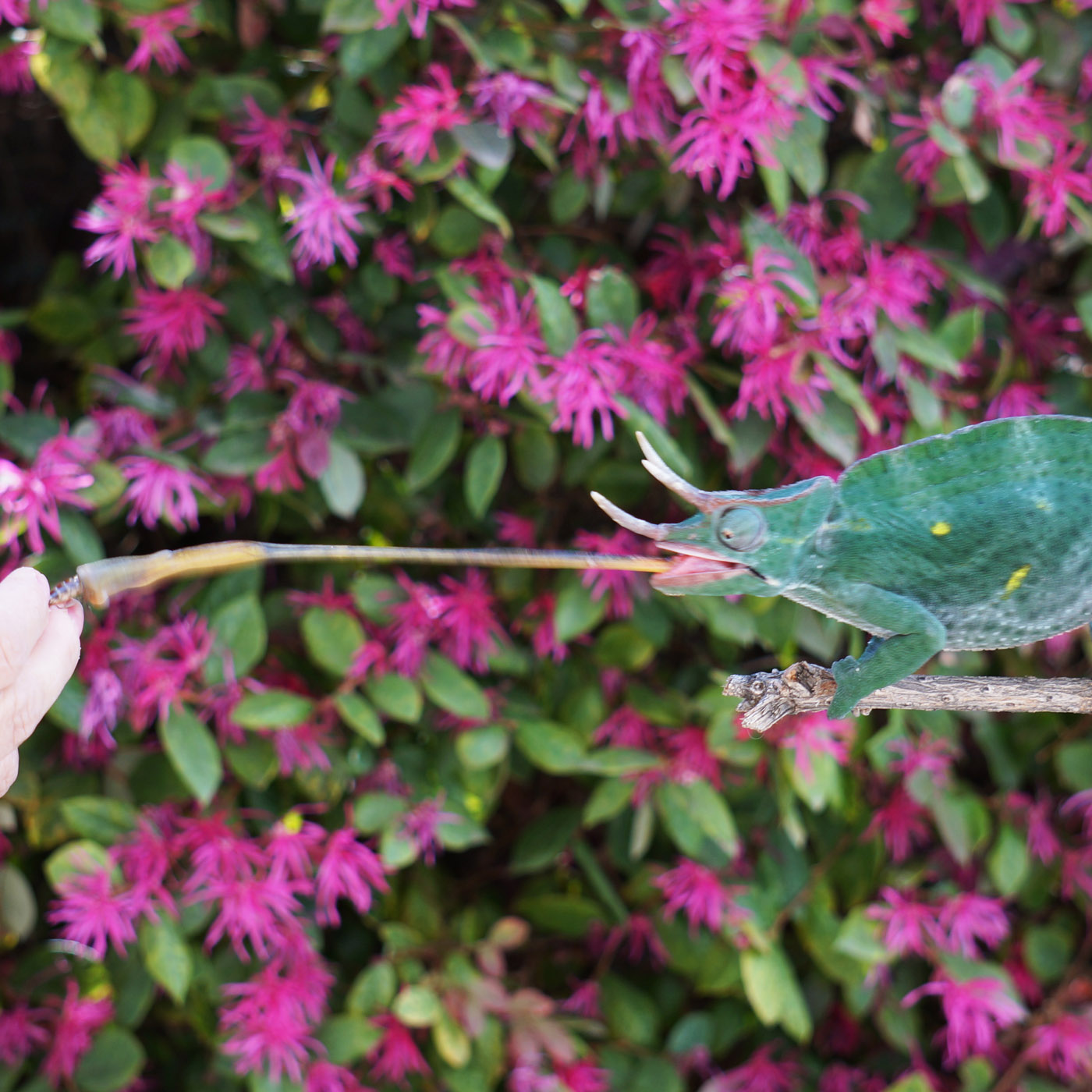

Bill Strand
Ep 143: Chameleon Tongue Issues
The Draco flying dragon is an incredible species that has the ability to shoot through the air from tree to tree. But it has been exceptionally hard to establish in captivity. Today I talk with breeder Charles Mcallister about the start of the captive breeding community.
Click image for show notes – activate the audio player to hear the episode
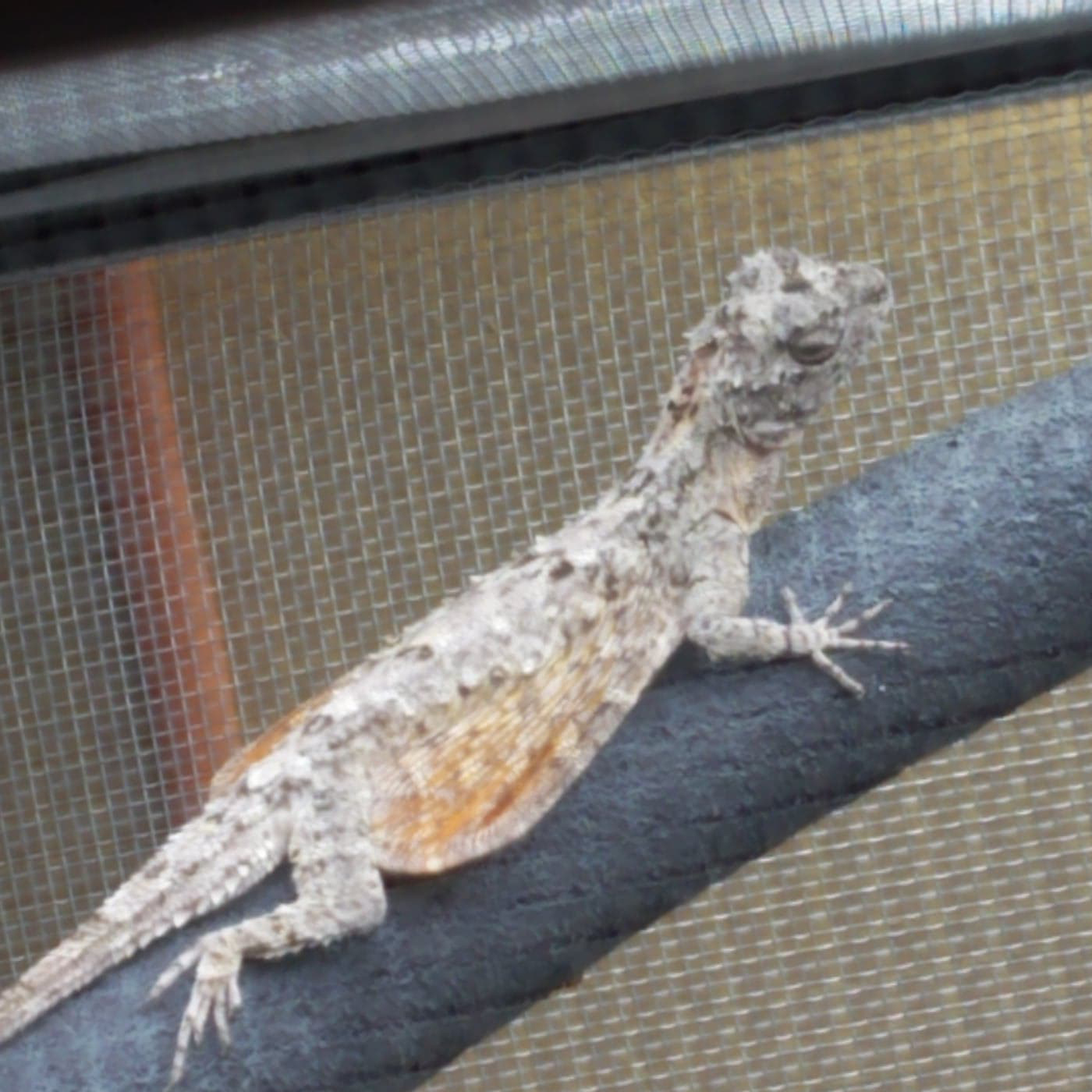

Bill Strand
Ep 144: Draco Flying Dragon
Dr. Mark Scherz joins me to discuss the different colors of Furcifer pardalis. Are they species? morphs? locales? The answers may not be ours yet, but Mark gives us discussion points to think about.
Click image for show notes – activate the audio player to hear the episode


Bill Strand
Ep 145: The Panther Chameleon Species with Dr. Mark Scherz
Chameleons perch on branches. They spend their lives on branches. So it is actually pretty important for us to give them the right branches. Today I go over branch functions, how to select the right branch for the right purpose, what woods to use and how to mount them in the chameleon cage. Alec O’Brien then joins me and discusses how he sterilizes his branches.
Click image for show notes – activate the audio player to hear the episode


Bill Strand
146: Branching Your Chameleon Cage with Alec O'Brien
One of the most exciting things a chameleon enthusiast can do is visit chameleons in their home country. And today I am going to talk with Jan Stipala about some nuts and bolts of planning a trip to Kenya.
Click image for show notes – activate the audio player to hear the episode


Bill Strand
Ep 147: Planning A Trip to Kenya
One of the most cryptic and incredible reptiles is the Uroplatus phantasticus also known as the Satanic Leaf-tailed Gecko. Quite the dramatic name for such a cute finger perching gecko! Today I talk to Lawrence Erickson who has bred U. phantasticus for many years.
Click image for show notes – activate the audio player to hear the episode


Bill Strand
Satanic Leaf-tailed Geckos with Lawrence Erickson
When we start with a new reptile the first thing we do is search for a care sheet. These are summaries that give us the basics of what that animal needs to thrive. But it can be confusing when you get two or three caresheets and they contradict each other. In today’s episode I talk about how caresheets are constructed and how to navigate the information they provide.
Click image for show notes – activate the audio player to hear the episode


Bill Strand
Ep 149: Understanding Chameleon Caresheets
Last week I talked about caresheets – how they were made and how we should use them. These provide guidelines for the husbandry. But then you see people breaking the rules. People you considered experts are doing it differently and then someone from left field is doing exactly what was said not to do and gloating about it. So, who do you listen to? Today, I talk about breaking the rules.
Click image for show notes – activate the audio player to hear the episode


Bill Strand
Ep 150: Breaking the Chameleon Rules
Starting off with chameleons can be an intimidating time. Coming into the chameleon community you are bombarded with UVB, D3, gradients, and a wide range of passionate, yet contradicting opinions. Today I am going to review the basics to get you off on the right foot.
Click image for show notes – activate the audio player to hear the episode


Bill Strand
Ep 153: Introduction to the Chameleon Community
Supplementation powders are a cornerstone of our captive reptile nutrition. One of the most prominent supplements in our community has been the Repashy Superfoods line. In today’s episode, Allen Repashy, the founder and formulator, comes on and shares with us what got him started in reptiles and how that led to creating a diverse line of nearly 50 specialty supplements and diets.
Click image for show notes – activate the audio player to hear the episode


Bill Strand
Ep 154: Allen Repashy and Reptile Supplementation
Today I am joined by Tyrone Ping who is a herpetological photographer from South Africa who achieved his six year goal of photographing all the chameleon species of his home country. Tyrone comes on and shares with us a little bit about what life is like in South Africa and introduces us to his country’s chameleons and the adventures he has had recording them.
Click image for show notes – activate the audio player to hear the episode


Bill Strand
Ep 155: Tyrone Ping and South African Herps
Trioceros ellioti is a small chameleon from Eastern Africa that is a livebearing species with the typical care requirements of montane chameleons. It is a charming species where the males and females are equally desirable as far as color and shape. Ease of husbandry and hardiness of this species make it a prime candidate for establishing in captivity. Today, Michael Nash comes on and shares his insight into breeding this species. It is hoped that this will help increase the number of breeders working with T. ellioti and raise awareness for this species.
Click image for show notes – activate the audio player to hear the episode


Bill Strand
Ep 157: Trioceros ellioti with Michael Nash
Chameleon husbandry is made up of many aspects including environmental conditions, nutrition, and emotional security. Everything we do that gets our husbandry closer to the optimal conditions strengthens our chameleon. Everything we do that is off weakens our chameleon. Today I talk about the cumulative effects of stress and how we should look at each one of these husbandry parameters.
Click image for show notes – activate the audio player to hear the episode


Bill Strand
Ep 158: Chameleon Health Points
Nighttime drops are an important part of chameleon husbandry. Today, I talk with Petr Necas about understanding why they are important and what they mean for us providing the best captive care possible.
Click image for show notes – activate the audio player to hear the episode


Bill Strand
Ep 159 Nighttime Temperature Drops with Petr Necas
The Nepenthes Tropical Pitcher plants are one of the most striking plants we can include in our chameleon environments. Their leaves sport ornate carnivorous pitchers at the ends and they add a flash of adventure to our plantscape. With me is Jeremiah Harris to share his expertise in this exciting genus!
Click image for show notes – activate the audio player to hear the episode


Bill Strand
Ep 160: Nepenthes Tropical Pitcher Plants with Jeremiah Harris
Welcome to this episode of the Outer Fringes. I must say that this episode has been hotly anticipated. Green Tree Pythons fit the bill as an arboreal reptile with a dedicated community that surrounds it. This is important to us because they have studied there reptile as deeply as we have studied ours and we can both benefit from each other’s efforts. And, if there is one snake that would be a natural transition for us, Green Tree Pythons, (or their boa counterpart, the Emerald Tree), would be top of the list for many of us!
Click image for show notes – activate the audio player to hear the episode


Bill Strand
Ep 161: Green Tree Pythons with Patrick Holmes
Good morning, Chameleon Wranglers! Last week we were joined by Patrick Holmes for an introduction to the Green Tree Python. Today we start in on the husbandry talk. We will actually have two episodes worth of husbandry information. The reason for this is that we are not just listing off parameters for us to blindly follow. Patrick is one of those who values you knowing why he says what he says, and thinks it is important that we acknowledge other methods. Sound familiar? So, even if you never plan on getting a green tree python, the approach you are about to hear deals with issues we face no matter what reptile we keep. This is very much about the compromises and decisions we are faced with when we strive to recreate a natural environment with unnatural equipment on the other side of the Earth.
Click image for show notes – activate the audio player to hear the episode


Bill Strand
Ep 162 : Green Tree Python Husbandry Pt. 1
Good morning Chameleon Wranglers! We have been spending the last couple weeks studying the Green Tree Python. This final week we wrap it up by me asking Patrick Holmes to lead us through the steps for us to get started with this beautiful snake. One of the most interesting things about this interview, from a high level, was seeing the parallels between our communities. You listen in you will hear some very familiar statements. Because they are the truth in all of our communities. Things like investing upfront in the genetics and health of the animal and proper set-up or else you will be investing that saved money in vet bills on the backside. Or else there being a distinct difference between stress spikes and chronic stress. Hmmm, are we seeing the dynamic of convergent evolution at play?
I invite you to listen in and enjoy the conclusion of our study into the Green Tree Python with Patrick Holmes.
Click image for show notes – activate the audio player to hear the episode


Bill Strand
Ep 163 Green Tree Python Husbandry Pt. 2 With Patrick Holmes
Today I have the honor of sharing with you a part of our early chameleon community. A multigenerational breeding project in the US which started in 1967,.. It was modelled off of a German project that took Jackson’s Chameleons to the F3 generation and a Southern California reptile club decided to replicate the experiment. I will be bringing on Jeff Hattem who, as a young man, was part of this project. Please join me in a view into our past.
Click image for show notes – activate the audio player to hear the episode
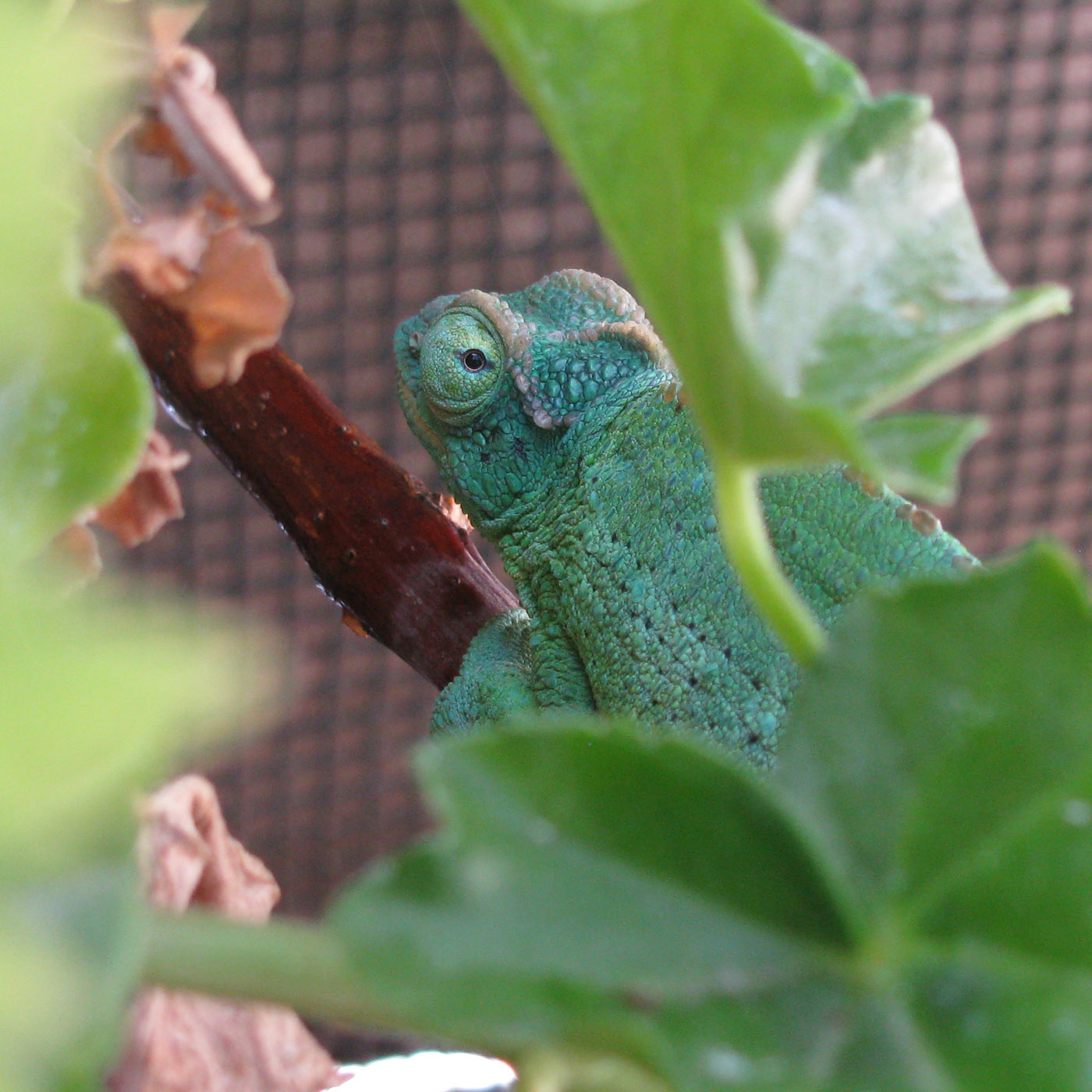

Bill Strand
Ep 164: The Early Chameleon Community with Jeff Hattem
Anyone who has tried to take a picture of a chameleon has found out that it isn’t that easy. They actively plot against you and your Instagram aspirations. So, in an effort to figure out how I can take better pictures of my chameleons I searched out the person who is not only the most prolific chameleon photographer of our time, but her work looks great. Perhaps some of that could rub off on me with just a podcast interview and ten short years of dedicated practice. Of course, I speak of Briana O’Brien who is the photographer from Kammerflage Kreations. She fills their social media accounts with a great deal of eye candy every week. Those with a photographic eye will notice an evolution of style, skill, and technique. So, can a talk with Briana change this iPhone wielding chameleon wrangler into a photographic artist? I will bring her on and we shall see.
.
Click image for show notes – activate the audio player to hear the episode


Bill Strand
Ep 165: Chameleon Photography with Briana O'Brien
Temporal Gland Infections are a bane of the keeper of the Jackson’s Chameleon. The Jackson’s is the most common of the chameleons with a temporal gland and infections tend to set in. What is this gland and how do we treat it? Today I am joined by Dr. Tom Greek and we discuss this medical issue.
.
Click image for show notes – activate the audio player to hear the episode


Bill Strand
Ep 166: Temporal Gland Infections with Dr. Tom Greek
One of the most important parts of creating a suitable living environment for our chameleons is the plant life we place in their home. Today I am joined by Bonnie Person of Verdant Vivariums and she will be giving us the basics of how to keep plants happy.
.
Click image for show notes – activate the audio player to hear the episode


Bill Strand
Plant Care Basics with Bonnie Person
Crested geckos are common place pet lizards that are available from private breeders all the way to big box pet stores. They are hardy and so are quite popular. If you work during the day and come home right before your chameleon starts to turn in for the night you might find some enjoyment in this nocturnal gecko who is just getting started when the sun goes down! Today I am joined by David and Manny from TikisGeckos who got their start breeding crested geckos and now run one of the prominent reptile captive breeding facilities.
.
Click image for show notes – activate the audio player to hear the episode


Bill Strand
Ep 168: Crested Geckoes with TikisGeckos
We hear about screen cages and we hear about glass cages. But what are these hybrid cages? Today I introduce you to the benefits of keeping chameleons in hybrid cages, how to use them, and even how to make your own.
.
Click image for show notes – activate the audio player to hear the episode


Bill Strand
Ep 169: Keeping Chameleons in Hybrid Cages
When you step into the chameleon world you find yourself in an immense undiscovered country. You never realized how many species of chameleons there are! So how do you go about learning the species just listed for sale? Today, I take you along with me as I gather information on a rarely available Captive Hatched chameleon species.
Click image for show notes – activate the audio player to hear the episode


Bill Strand
Researching Chameleon Species
The ZooMed Chameleon Kit is one of the most common starting points for chameleon keepers. But one soon learns that it must be upgraded. Unfortunately, this isn’t always expected by the new keeper. And it must often be done with an urgency that requires guidance. In today’s episode I review the transition from the Chameleon Kit to the final cage set-up.
Click image for show notes – activate the audio player to hear the episode


Bill Strand
ep 171: Transitioning from the Chameleon Kit
We have come to the close of Season five of the Chameleon Academy podcast. In this final episode of the season I am going to review 2020 through the eyes of a chameleon keeper.
Click image for show notes – activate the audio player to hear the episode


Bill Strand
Wrapping up the 2020 Chameleon Year



